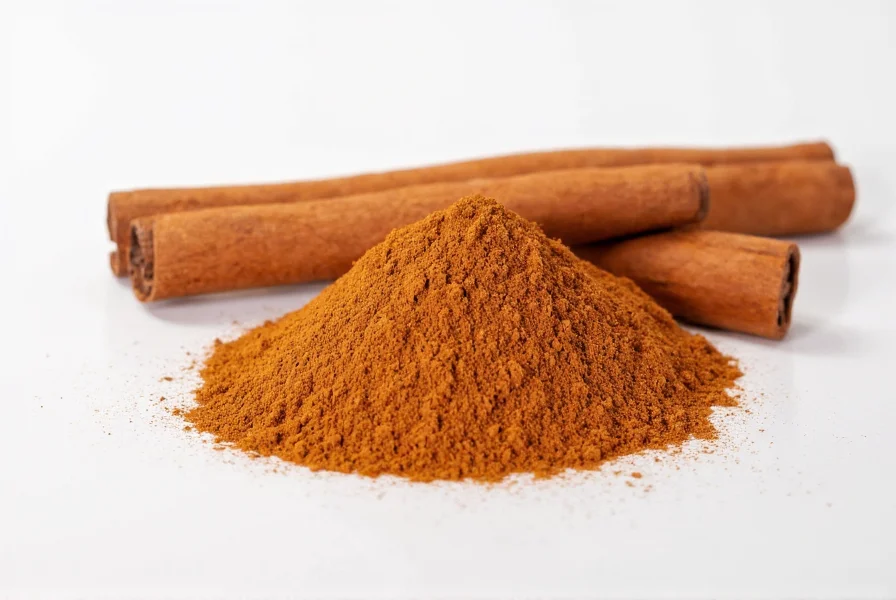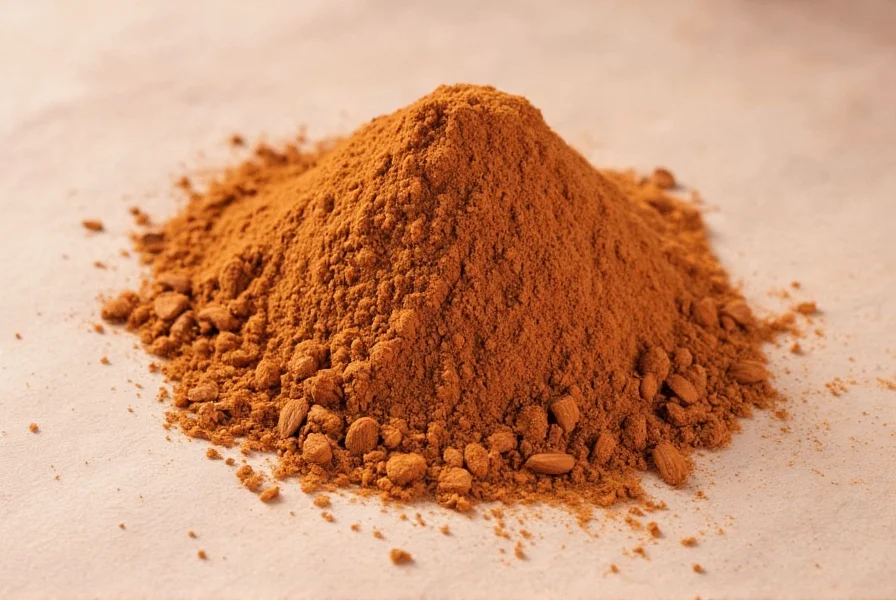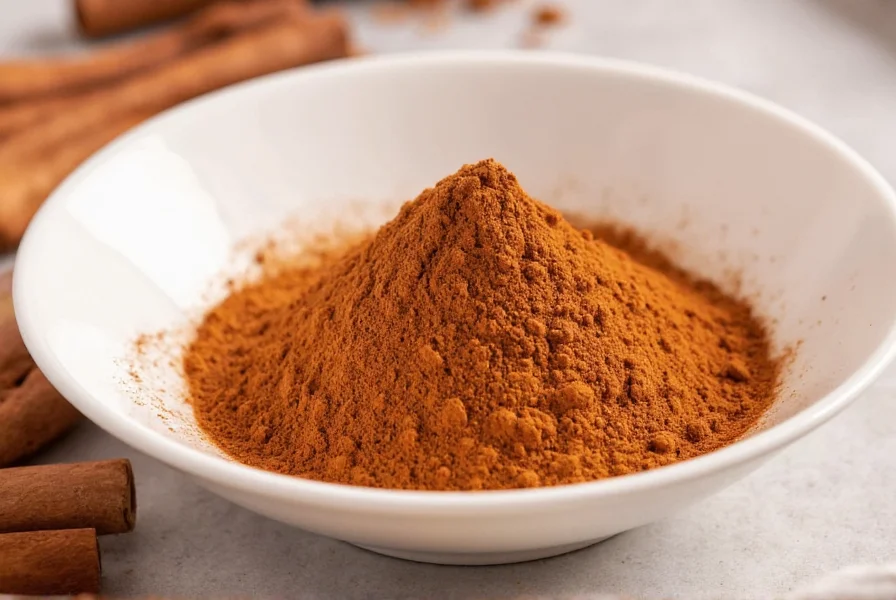Cinnamon powder transforms culinary creations and may contribute to wellness when used appropriately. This comprehensive guide explores the science-backed facts about this ancient spice, helping you make informed decisions about its use in your kitchen and daily routine.
What Exactly Is Cinnamon Powder?
Cinnamon powder originates from the inner bark of trees belonging to the Cinnamomum genus. Harvesters remove the outer bark, then carefully scrape the inner bark which naturally curls into quills as it dries. These quills get ground into the fine powder found in spice racks worldwide. The two primary commercial varieties are Ceylon cinnamon (often labeled "true cinnamon") and the more common Cassia cinnamon.
Historically, cinnamon has been valued since ancient Egyptian times, initially as a luxury item traded along spice routes. Its journey from exotic rarity to kitchen staple demonstrates its enduring appeal across cultures and centuries.
Understanding Cinnamon Powder Varieties
Not all cinnamon powder is created equal. The market primarily offers two distinct types with significant differences:
| Characteristic | Ceylon Cinnamon | Cassia Cinnamon |
|---|---|---|
| Origin | Sri Lanka, Madagascar, Seychelles | China, Indonesia, Vietnam |
| Appearance | Multiple thin, delicate layers | Single thick, hard quill |
| Taste Profile | Milder, sweeter, complex | Stronger, spicier, more intense |
| Coumarin Content | Very low (0.004-0.016%) | High (2.15-6.97%) |
| Market Availability | Less common, typically more expensive | Most widely available (90% of US market) |
When selecting cinnamon powder for health considerations, understanding these differences becomes crucial, particularly regarding coumarin content. Ceylon cinnamon's significantly lower coumarin levels make it preferable for regular consumption, especially for individuals with liver concerns or those consuming larger quantities.

Nutritional Composition of Cinnamon Powder
Per teaspoon (2.6g), cinnamon powder typically contains:
- 6 calories
- 2.1g carbohydrates
- 1.4g fiber
- 0.1g protein
- Significant manganese (15% of daily value)
- Calcium (4% of daily value)
- Iron (2% of daily value)
The distinctive properties of cinnamon powder stem primarily from cinnamaldehyde (60-90% of essential oil), which gives cinnamon its characteristic flavor and aroma while contributing to many of its potential health effects. Other compounds include eugenol, linalool, and coumarin, with concentrations varying significantly between Ceylon and Cassia varieties.
Culinary Applications of Cinnamon Powder
Cinnamon powder's versatility extends far beyond traditional sweet applications. Professional chefs and home cooks utilize it in diverse ways:
Baking and Desserts
Cinnamon powder enhances cakes, cookies, and pastries. The optimal amount varies by recipe, but generally 1-2 teaspoons per recipe provides balanced flavor without overwhelming other ingredients. For cinnamon rolls, freshly ground powder creates more vibrant flavor than pre-ground versions.
Beverages
Adding 1/4 to 1/2 teaspoon of cinnamon powder to coffee, tea, or hot chocolate creates aromatic warmth. In traditional Mexican hot chocolate, cinnamon powder combines with chocolate for a distinctive flavor profile.
Savory Dishes
Cinnamon powder features prominently in Middle Eastern and North African cuisine. It complements lamb dishes, enhances Moroccan tagines, and balances flavors in Indian curries. When using cinnamon powder in savory applications, start with small amounts (1/8 to 1/4 teaspoon) and adjust to taste.

Evidence-Based Health Considerations
Research on cinnamon powder's health effects shows promising but nuanced results:
Blood Sugar Regulation
Multiple studies, including a 2013 meta-analysis published in the Journal of Medicinal Food, indicate cinnamon powder may help improve insulin sensitivity and lower fasting blood glucose levels. Participants consuming 1-6 grams daily showed modest improvements, though effects varied significantly between individuals. These findings suggest cinnamon powder could complement diabetes management strategies but shouldn't replace prescribed treatments.
Antioxidant Properties
Cinnamon powder ranks among the most antioxidant-rich spices. Its ORAC (Oxygen Radical Absorbance Capacity) value exceeds 250,000 μmol TE/100g, significantly higher than many fruits and vegetables. These antioxidants help combat oxidative stress, potentially reducing inflammation throughout the body.
Important Limitations
Current research has limitations: many studies use small sample sizes, short durations, or concentrated extracts rather than culinary amounts of cinnamon powder. Most health benefits observed in research require consumption levels higher than typical dietary use. Additionally, Cassia cinnamon's high coumarin content necessitates consumption moderation.
Safety Guidelines for Cinnamon Powder Consumption
While generally recognized as safe, cinnamon powder requires mindful consumption:
Coumarin Content Considerations
Coumarin, naturally present in higher concentrations in Cassia cinnamon, can cause liver toxicity in sensitive individuals when consumed in excess. The European Food Safety Authority recommends a tolerable daily intake of 0.1 mg coumarin per kilogram of body weight. For a 60 kg (132 lb) person, this equals approximately 6 mg daily.
Given that Cassia cinnamon contains about 1,000 mg of coumarin per kilogram, consuming just 1 teaspoon (2-3 grams) of Cassia cinnamon powder could approach or exceed recommended limits for some individuals. Ceylon cinnamon provides a safer option for regular consumption.
Special Population Considerations
Certain groups should exercise additional caution with cinnamon powder:
- Individuals with liver conditions should consult healthcare providers before regular consumption
- Pregnant women should limit intake to culinary amounts
- Those taking blood thinners should monitor consumption due to potential interactions
- People with cinnamon allergies should avoid all forms
Selecting and Storing Cinnamon Powder
Maximize freshness and flavor by following these guidelines:
Selection Criteria
Look for cinnamon powder with vibrant color and strong aroma. Check labels for variety specification (Ceylon vs Cassia). Organic certification may indicate fewer pesticides, though doesn't guarantee superior flavor. Small-batch producers often provide higher quality than mass-market options.
Proper Storage Methods
Store cinnamon powder in an airtight container away from light, heat, and moisture. A cool, dark cupboard works well for short-term storage (3-6 months). For extended freshness (up to 1 year), refrigeration in a sealed container prevents moisture absorption and preserves volatile oils.
Regularly check your cinnamon powder's aroma. If it lacks strong scent when rubbed between fingers, it has likely lost significant flavor compounds and should be replaced. Properly stored, high-quality cinnamon powder maintains potency for 6-12 months.
Practical Integration into Daily Routine
Incorporate cinnamon powder thoughtfully into your diet:
- Add 1/4 teaspoon to morning oatmeal or smoothies
- Mix with honey for occasional soothing throat remedy
- Sprinkle over roasted vegetables like sweet potatoes
- Combine with turmeric in golden milk recipes
- Use in moderate amounts in baking recipes
Remember that culinary use provides flavor enhancement with potential secondary benefits, while therapeutic applications require specific dosages best discussed with healthcare professionals. The key to enjoying cinnamon powder's benefits lies in consistent, moderate consumption as part of a balanced diet.











 浙公网安备
33010002000092号
浙公网安备
33010002000092号 浙B2-20120091-4
浙B2-20120091-4